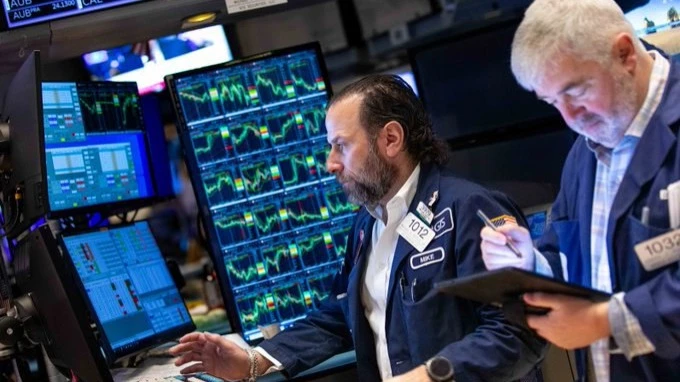The S&P 500 and Nasdaq 100 are down at the open of trading after a morning selloff
Wall Street has stood up for bank stocks, CNBC writes

The U.S. stock index S&P 500 fell 0.2% at the opening of trading on October 17, after futures showed a 1% drop. The Nasdaq 100 index lost twice as much, while the Dow Jones Industrial Average started the session in the plus by 0.2%. The markets are pressured by the problems of regional banks, most notably Zions Bancorp and Western Alliance, which reported bad loans, as well as a prolonged shutdown in the U.S. and increased trade tensions with China.
Details
- The main U.S. stock index S&P 500 after the opening of trading on October 17 fell by about 0.2%. On October 16, the index ended trading down by 0.6%, and on October 17, futures on the index were falling by more than 1% at the moment.
- The Nasdaq Composite index, which focuses on the technology sector, fell 0.4%. At the close on Thursday, it collapsed by 0.5%.
- The index of "blue chips" Dow Jones Industrial Average trades in a slight plus by 0.1%. The day before, it lost almost 0.7%.
Bank stocks, which led the sell-off on Thursday, continued to decline at the opening of the session on Friday.
The deterioration in stock market sentiment was reflected in a sharp rise in the Wall Street VIX "fear index" - it jumped to 27 points on Friday, reaching the highest level since April, when Donald Trump stirred up the markets with the announcement of increased duties. The index later corrected but still remains above the psychologically important 20-point mark.
The market may have been partially supported by U.S. President Donald Trump's statement that high duties against China are not a viable solution, Bloomberg reports. "It's unsustainable," Trump said in an interview with Fox Business TV, when asked if the duties he threatened to impose could be sustained without serious damage to the economy. - "But those are the numbers right now. Probably not... The [economy] might be able to sustain, but they forced me to go for it."
What are the analysts saying?
Wall Street is up in arms over bank securities, and traders are betting that the troubled loans to Zions and Western Alliance were isolated incidents rather than a sign of a broader crisis, CNBC notes.
- Investment firm Baird believes the investor reaction of regional bank Zions Bancorp, whose shares plunged 13% Thursday, was overreaction. Analyst David George assessed Zions' troubled loans as a unique case rather than a sign of a systemic problem. He recommended buying the bank's shares on the downturn, after which they soared 5% on the premarket.
- "While this was a seemingly isolated story of two banks with market capitalizations of less than $10 billion each, the event inevitably sparked comparisons to the regional banking crisis following the collapse of SVB [Silicon Valley Bank] in March 2023 and raised broader questions about potential credit quality issues," Deutsche Bank analyst Peter Sidorov wrote.
- "We don't believe banks have systemic credit quality problems. Everything we're seeing now is mostly due to isolated cases - such as the [bankruptcies of] First Brands and Tricolor - while overall the quality of loan portfolios is even better than expected," says Adam Crisafulli of Vital Knowledge.
- Charles Schwab chief investment strategist Liz Ann Saunders told CNBC that the anxiety in the banking sector has coincided with a "spike in speculative froth" in the market, with investors actively buying up riskier assets - stocks of companies related to quantum computing, drones and loss-making technologies."When there is a speculative froth in the market and then there is a potentially more serious external factor, these two phenomena can collide and cause volatility to rise," Saunders said. That "froth" is now being seen not among the market giants but in smaller segments, including the Russell 2000 index, which hit a new high this week, she said.
- For confirmed bulls, such anxiety spikes are just short-term dips that provide an opportunity to buy stocks as part of a long-term rally, MarketWatch notes, quoting Fundstrat founder Tom Lee. In a note sent out Thursday night, he reiterated his growth expectations for the S&P 500 - he estimates the index will end the year at 7,000 points, about 5.5% higher than it is now. Lee acknowledges that the credit market's problems are troubling for investors who remember the collapse of Silicon Valley Bank. "So I understand the market's 'shoot, then aim,' reaction," the analyst wrote. Still, he pointed to a subdued reaction in the high-yield bond market, where spreads remain well below their April peaks. That, Lee said, "provides reassurance that fundamentals are not deteriorating."
This article was AI-translated and verified by a human editor
